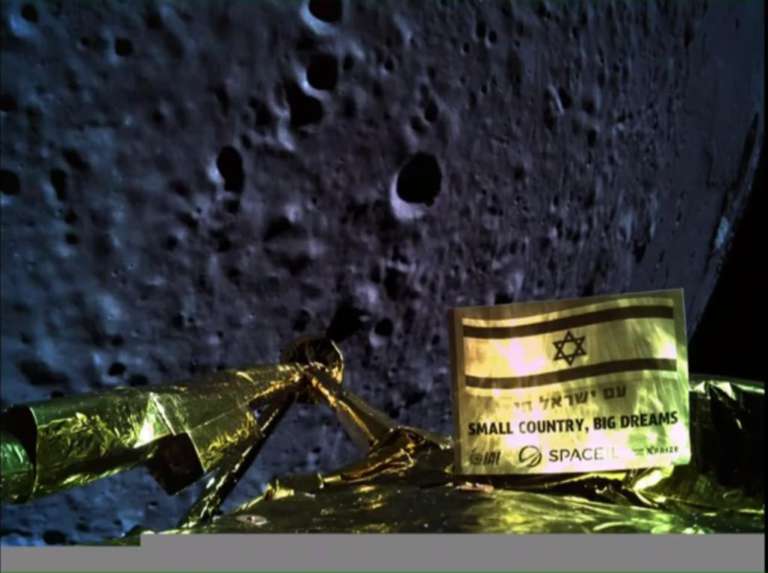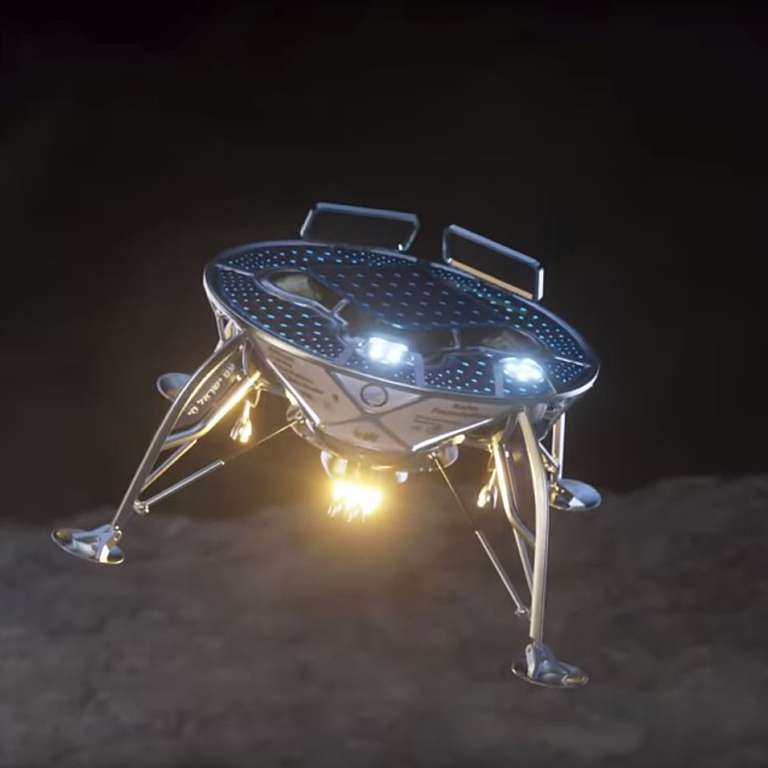Jason Davis • Apr 11, 2019
Beresheet Comes Close before Crashing on the Moon
It was close, but SpaceIL's Beresheet spacecraft couldn't quite stick its landing on the Moon.
After what appeared to be a flawless initial descent, mission controllers announced Beresheet had a problem with its main engine. Real-time telemetry provided by SpaceIL showed the spacecraft was descending too quickly for its low altitude, and though the team was eventually able to restart the engine, it was too late. Signals from the spacecraft were lost at about 19:23 UTC (15:23 EDT), as Beresheet apparently crash-landed and stopped transmitting.
Beresheet1, a private Israeli Moon mission
Beresheet1 was a private Moon lander by Israeli non-profit SpaceIL that crashed on the surface in 2019.
Beresheet's landing burn began at 19:11 UTC, as tracked by radio enthusiasts watching shifts in the spacecraft's Doppler signal from Earth. As I noted in our landing preview, SpaceIL had listed 19:05 as the landing procedure start time; apparently this was not the burn itself, which started 14 minutes afterwards.
All seemed to go well at first, and Beresheet even managed to send home an image from a height of 22 kilometers above the lunar surface:

Another image, which would turn out to be Beresheet's last, came in at some point after that:

The first sign of trouble came at about 19:21 UTC, when flight controllers reported one of Beresheet's inertial measuring units had reset, temporarily shutting off the flow of telemetry. It was unclear if this was related to the engine problem that ultimately doomed the spacecraft.
Roughly a minute later, a telemetry indicator for Beresheet's velocity turned red, indicating what may have been a higher-than-expected 74.9 meters per second vertical approach speed. Shortly thereafter, indicator lights for Beresheet's engines blinked off, and an official in mission control announced there was a problem with the spacecraft's main engine.
The main engine came back online, but at that point, the spacecraft's altitude showed just 149 meters, while its vertical speed was still 134 meters per second, and its horizontal speed was 947 meters per second. At that point, all telemetry from the spacecraft stopped, and ground observers reported a loss of signal at 19:23.
Signal lost at 19:23:01UTC. Probably when #Beresheet crashed into the lunar surface. Too bad for #Beresheet, but great achievement overall by @TeamSpaceIL! pic.twitter.com/d4gZDrhMuV
— Cees Bassa (@cgbassa) April 11, 2019
Despite the crash, SpaceIL officials seemed positive, and the team received space community praise for having come so close to a goal set back in 2011 to win the $20 million Google Lunar X-Prize. The XPRIZE Foundation had already announced a $1 million "Moonshot award" for SpaceIL if Beresheet stuck the landing, and founder Peter Diamandis said SpaceIL would still get the award to pursue "Beresheet 2.0."
XPRIZE to award $1 Million Moonshot Award to SpaceIL team for them to continue their work and pursue Beresheet 2.0. Space is hard!!! @xprize @TeamSpaceIL pic.twitter.com/J4Zo5eaYMT
— Peter Diamandis (@PeterDiamandis) April 11, 2019
NASA, which had partnered with SpaceIL on the mission, also expressed support:
While @NASA regrets the end of the @TeamSpaceIL mission without a successful lunar landing, we congratulate SpaceIL, Israel Aerospace Industries and the state of Israel on the accomplishment of sending the first privately funded mission into lunar orbit. https://t.co/XwHpN5M8Pu pic.twitter.com/cfMtP4srDr
— Jim Bridenstine (@JimBridenstine) April 11, 2019
Though Beresheet didn't land in one piece, it may get one final consolation prize, albeit a morbid one: It's possible that NASA's Lunar Reconnaisance Orbiter might be able to spot the crater Beresheet left in the surface.
If the last telemetry from #Beresheet is correct (950 m/s) then the 150kg lander likely left a crater 3-5 m in diameter. That would be big enough to be spotted by @LRO_NASA. The low impact angle (~8°) will make for a very elongated impact site. I hope we can find it. https://t.co/Vd2S8LOn8n
— Max Fagin (@MaxFagin) April 11, 2019
Support our core enterprises
Your support powers our mission to explore worlds, find life, and defend Earth. You make all the difference when you make a gift. Give today!
Donate

 Explore Worlds
Explore Worlds Find Life
Find Life Defend Earth
Defend Earth


